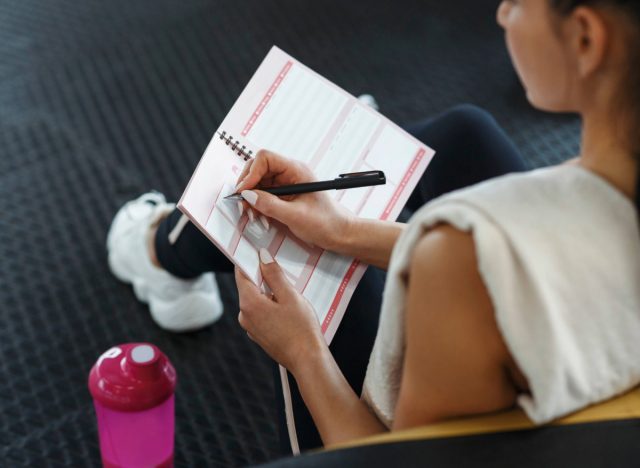Why Your Ab Workouts Aren't Getting Results—And How to Actually See a Six-Pack

We've all been there—crunching, planking, and twisting, only to wonder why those six-pack abs remain hidden. As a coach with over a decade of experience working with athletes and clients of all levels, I've seen countless people hit the gym with high hopes for sculpted abs, only to be left frustrated. Core training isn't just about doing more exercises; it's about doing the right ones with proper intent and focus. Navigating core exercises can be tricky, especially when many fall into common traps that keep them from seeing the progress they're after.
One of the biggest obstacles? Nutrition. You could have the strongest core, but if your diet isn't dialed in, those muscles won't show. You've probably heard the saying, "Abs are made in the kitchen," and it's spot-on. Your workout is only half the battle. Without a proper nutrition plan to burn fat, your hard work will stay hidden under a layer of fat.
It also comes down to engagement—core training isn't about mindlessly going through the motions. Each movement should be purposeful. I tell my clients to "train with intent," meaning they focus on actively engaging their core in every movement. Building a strong core takes time, consistency, and a solid strategy.
Let's dive into some of the key reasons your ab workouts aren't delivering the desired results and how you can tweak your routine to start seeing real progress.
Reason #1: Your Nutrition Isn't Supporting Your Goals

No matter how many ab workouts you do, you'll struggle to see results if your diet works against you. Abs become visible when your body fat percentage is low enough to reveal them, which comes down to creating a calorie deficit through diet.
How to Fix It: If you're not tracking your food or paying attention to your macronutrient balance, it's time to start. Tracking your meals can provide useful insights into where you may overeat or consume hidden calories.
In addition, focus on eating whole foods, lean proteins, healthy fats, and complex carbs to fuel your workouts and aid in fat loss. Aim for a balanced diet that supports fat loss without depriving yourself of essential nutrients.
You may also find it helpful to work with a nutrition coach or use apps to monitor your progress and keep you accountable.
Reason #2: You're Not Engaging Your Core Properly

I see this all the time—people rush through ab exercises, swinging their legs or using momentum instead of isolating and engaging their core muscles. Effective ab workouts require focus and control. If you're not feeling the burn in your abs after a workout, you're probably not engaging your core properly.
How to Fix It: Slow down. Focus on form over speed, and actively consider contracting your core muscles during each rep. Whether you're doing planks, crunches, or leg raises, make sure your core is tight and you're not relying on other muscle groups (like your hip flexors) to do the work.
Reason #3: Your Routine Lacks Variety

Relying on just one or two go-to exercises is a recipe for stagnation. Doing the same few movements, like endless crunches, limits your ability to target all the muscles in your core, including your obliques and deeper stabilizer muscles. Your core is complex, and your workouts should be too.
How to Fix It: Mix it up! Incorporate exercises that hit all parts of your core. Add movements like Russian twists, mountain climbers, or hanging leg raises. A well-rounded routine will work your rectus abdominis, obliques, transverse abdominis, and lower back for a fully engaged core.
Reason #4: You're Overdoing the Reps

More isn't always better. Doing hundreds of reps isn't going to get you a six-pack faster. Doing too many repetitions with poor form can lead to muscle imbalances or even injury. Quality trumps quantity when it comes to core training.
How to Fix It: Focus on fewer reps with higher intensity. Instead of blasting through 100 crunches, try doing 10 slow, controlled reps with proper form. You can add resistance to your core exercises with weights or resistance bands to increase the challenge without increasing the rep count.
Reason #5: You're Skipping Compound Movements

Many think ab workouts should be isolated to crunches and sit-ups, but that's only part of the picture. Compound movements, like squats, deadlifts, and overhead presses, engage your core as much, if not more, as traditional ab exercises. These movements force your core to stabilize your body, building strength and endurance.
How to Fix It: Include more compound exercises in your workout routine. Deadlifts, kettlebell swings, bent-over rows, and squats are all great examples of movements that challenge your core while working with other muscle groups.
Reason #6: You're Not Being Consistent

Abs don't appear overnight. Even with a solid workout plan and clean eating, seeing real changes takes time and consistency. Skipping workouts or being inconsistent with your routine will slow your progress.
How to Fix It: Commit to a routine and stick with it. Aim to train your core two to three times per week, and be patient with the process. Progress may feel slow, but consistency is key to building visible abs.
Reason #7: You're Not Prioritizing Recovery

Overtraining can actually prevent progress. Your muscles need time to recover and grow stronger, and that includes your core. If you constantly hammer your abs without giving them a break, you're not giving your body the time it needs to rebuild and repair.
How to Fix It: Incorporate rest days into your weekly routine, especially if you frequently train your core. Focus on quality sleep, hydration, and proper stretching to promote recovery.









